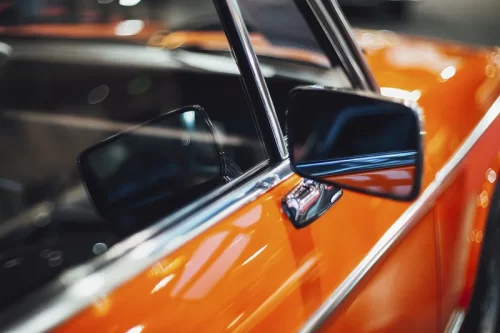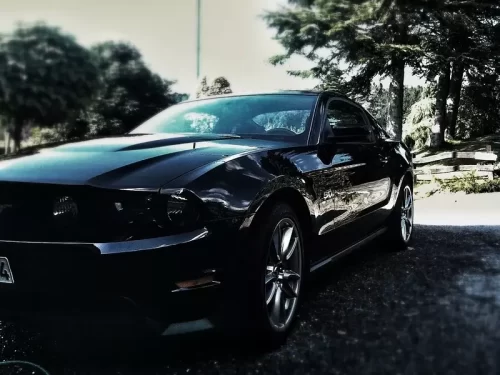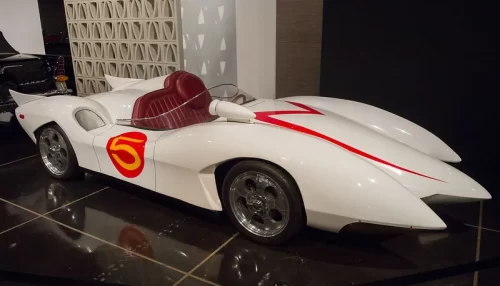
6 Tips to Protect and Preserve Your Windshield and Wipers
Issue 17 • Engine & Transmission Tip You Can Do A LOT To Protect and Preserve Your Windshield and Wipers Nobody Likes Bug Splatter. Bleck!

Featuring A Genuine, Fully-Functional Lexus 2054 Concept Car
The Lexus 2054 is a movie concept car designed by Harald Belker for the 2002 Steven Spielberg film Minority Report. The film is set in Washington, D.C. in 2054, where police utilize psychic technology to arrest and convict murderers before they even commit their crime. Tom Cruise plays the head of the Precrime Unit and is eventually accused of a future murder himself.
Minority Report keeps resonating in pop culture not because it was a great movie (it was okay) but because it featured one of the coolest custom, one-off concept cars, from a real automotive brand, Toyota. The Lexus 2054, is a wildly-curved coupe, envisioned by Lexus as what a performance car might look like 50 years in the future.
When it came time to conceptualize futuristic vehicles, Steven Spielberg, a Lexus owner himself, reached out to Toyota/Lexus for what eventually became a truly believable car of the future.
In the film’s design for its Washington, DC setting circa 2054, a mass transportation system uses electrical/magnetic energy – much like that which sends a bullet train speeding along – with horizontal and vertical surfaces covered with “roadways” made of magnetic discs that support and propel various vehicles. In this accident-free, computer-controlled system, vehicles move at speeds of 80 to 100 miles per hour. In the city’s transportation layout, private pods, taxis, and multi-passenger cars all negotiate the MAG-LEV system. As cars travel, they make seamless transitions between vertical and horizontal surfaces.
MAG-LEV is real, which makes the transportation featured in the film plausible.
There were actually two versions of the 2054. The MAG-LEV described above, and the “outside-the-city” version, dubbed the “Red Off-System” sports car, which was designed specifically for Tom Cruise. Designed as a high-performance, two-seat personal sports car – it flexes a muscular design with the ultimate in cab-forward seating; a low, enclosed wheelbase for sportiness; aggressive lines, and proportions so unexpected that, at first glance, it’s not entirely evident which end is the front and which is the rear.
Conceptually, the “Red” sports car features an electric engine, heads-up instrumentation with night vision and organic recognition capability, color-selectable body panels (changeable with a simple owner voice command), DNA recognition entry and ignition system, and auto valet – a feature that allows the car to drop the owner off at a desired location, park itself for recharging, and arrive for owner pick-up at the commanded location.
In production for the film, each vehicle had certain requirements. In the case of the red off-system sports car, it had to be fully electric and maintain 70 miles per hour for stretches of time. Even though, in automotive parlance, that car was deemed a “concept car,” it had to be functional: doors had to open, the steering wheel had to tilt, and seats had to recline. And of course, to reach top velocity and perform on-screen as well as it does, the coupe – powered by 47 batteries and an all-electric motor – required an intact four-speed standard shift with reverse. Post-production computer-generated special effects create the coupe’s futuristic instrumentation, including a “heads-up display” (an on-windshield projection providing a clear view of controls and gauges a driver would typically have to look down for).
For the MAG-LEV vehicle, rotating pods substitute for wheels. Swiveling seats were installed to enable driving from either end. The vehicle has a full-glass roof, which is on prominent display during some chase scenes, and doors that, similar to sliding glass doors, open from the center to allow the occupant to step out. In the film, Cruise’s MAG-LEV is a jade green with tinted glass on the sides as well as the roof. As with the coupe, the heads-up display images are also computer generated in this model.
In the case of both cars, luxurious touches were added inside with wood grain paneling, leather-wrapped interiors, and glistening screens. This interior styling came directly from Lexus Futurist Designers, who wanted the inside of the car, the seats and furnishings, to bear more relation to a living room environment than a car. Highly styled, comfortable seats conform to individual bodies; seating configurations can be changed so passengers can face forward or each other. The entire cabin lends itself to a video screen that allows the “driver” to perform a multitude of functions, none of which has to do with driving.
Amazingly, these two vehicles – along with a dozen other background vehicles – were created from sketch to completion in about two months, to become the fully-appointed, fully-functional Lexus stars of Minority Report.


Issue 17 • Engine & Transmission Tip You Can Do A LOT To Protect and Preserve Your Windshield and Wipers Nobody Likes Bug Splatter. Bleck!

Issue 24 • Engine & Transmission Tips Use these great tips for a smarter waxing job, and superior results! Waxing your car can be as

The 1992 Ford Explorer XLT Debuted In Jurassic Park Legendary. Not for its engine, but for its paint job! To be honest, the Ford Explorer

When Autumn Falls, Orange Cars Roll Out for Seasonal Sightseeing Orange you glad you checked in to read this great feature! Orange you serious? Orange

Issue 11 • Engine & Transmission Tips No great story ever started with “I remember when my alternator failed.” Inside your engine is something called

From Anime To The Big Screen, This Incredible Race Car Came Alive The Real Mach 5, is actually a real Mach 5, right down to